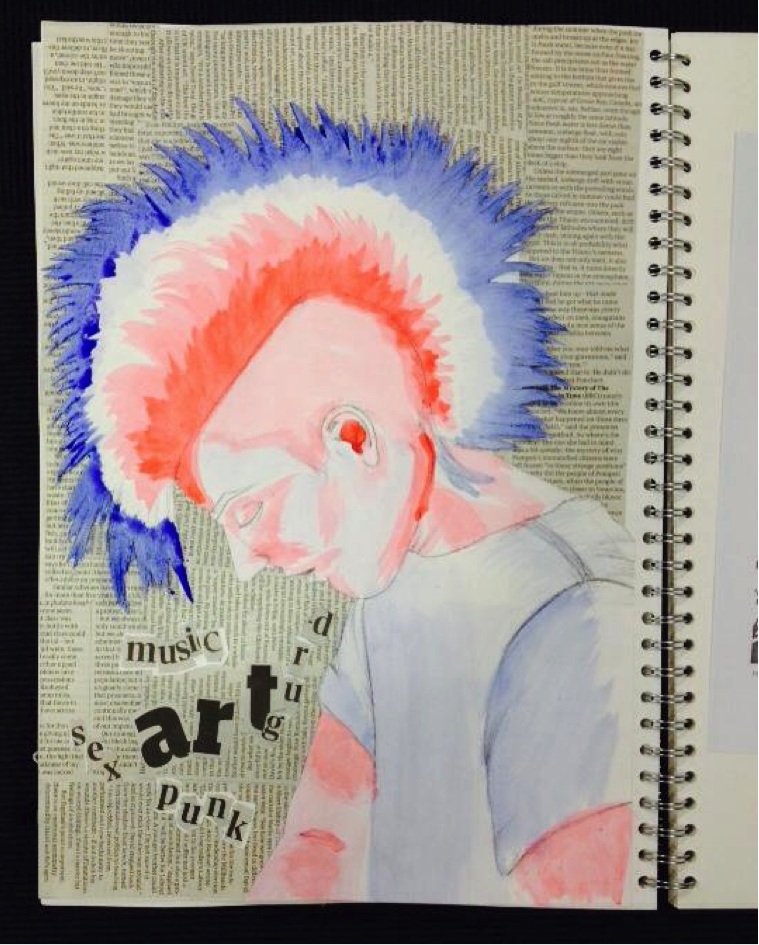Cubism
Cubism was created in Paris between 1907 and 1914.
The key artists involved in creating this art movement were Pablo Picasso and Georges Braque. As cubist artists, they dealt with their subject matter by emphasizing the flat, two-dimensional surface of the picture, rejecting the traditional techniques of perspective, foreshortening and modelling. Cubist painters were not bound to copying form, texture, colour, and space, this is the technique in which they used.
Key Artists
 |
| Georges Braque |
 |
| Pablo Picasso |
In Braque's work of landscapes, the volumes of the houses, the forms of the trees, and the tan-and-green color palette deeply inspired the Cubists in their first stage of development, until 1909. It was, however, "Les Demoiselles d'Avignon" a work painted by Picasso in 1907, that started the new style. In this work, the forms of five female nudes became angular shapes.
 |
| "Les Demoiselles d'Avignon" by Pablo Picasso |
Influences
The work of Cézanne was an influence behind Cubism, the geometric forms and compressed picture space in his paintings appealed especially to Braque, who developed them in his own works.
Also "Picasso's Demoiselles d'Avignon" painting is one of the most significant examples of the art movements influence.
Finally, African sculpture particularly mask carvings, had enormous influence in the early years of the movement.
Types Of Cubism
The first type of Cubism was "Analytical Cubism" it is one of the two major branches of the artistic movement of Cubism and was developed between 1908 and 1912. Cubists "analysed" natural forms and changed the forms into basic geometric parts on the two-dimensional picture. Colour was almost non-existent except for the use of a monochromatic scheme that often included grey, blue and ochre. Instead of an emphasis on colour, Analytic cubists focused on forms like the cylinder, sphere and the cone to represent the natural world. During this movement, the works produced by Picasso and Braque shared stylistic similarities.
 |
| "Ambrose Vollard" by Pablo Picasso |
The transition to the synthetic phase was determined by collages since it
created the possibility of working from the abstract to the particular, as demonstrated in the "The Musicians Table" by Braque, in which pin and tack marks remain in the corners of the shapes that form the basic composition.
 |
| "The Musicians Table" by George Braque |
Analysing Cubist Portraiture
 |
| Cubist Self-portrait by Pablo Picasso |
Above is a self portrait that Picasso created. Personally I think that his technique that he used was to use large and free brush marks with a wide use of oil paints. For this particular piece of work I think he used a flat brush as there many sharp fine lines to create cubism within the work.
 |
| Cubist Portrait of Maurice Raynal by Jaun Gris |
Above is a cubist portrait of Maurice Raynal by the artist Juan Gris. The technique I think that Gris used was to use a limited palette of oil paints, a small brush to create detail and simplicity within his work. Compared to Picasso's work, Gris uses a more realistic palette range and therefore his work shows less emotion towards the subject matter within his work.
African Mask
 |
| My own tonal drawing of an African Mask using pencil only |











































